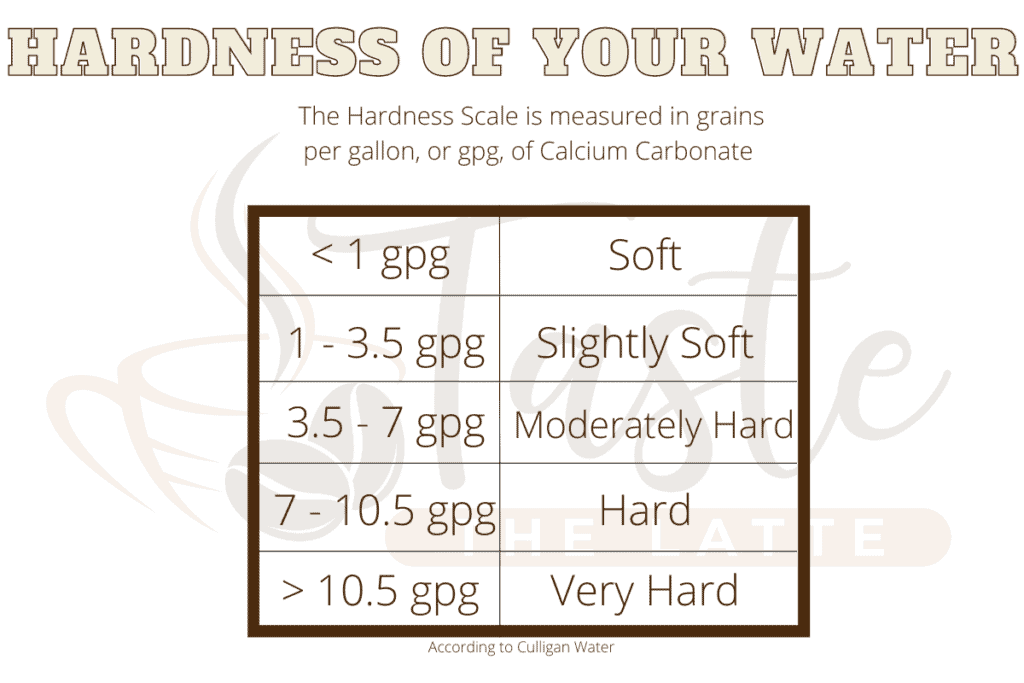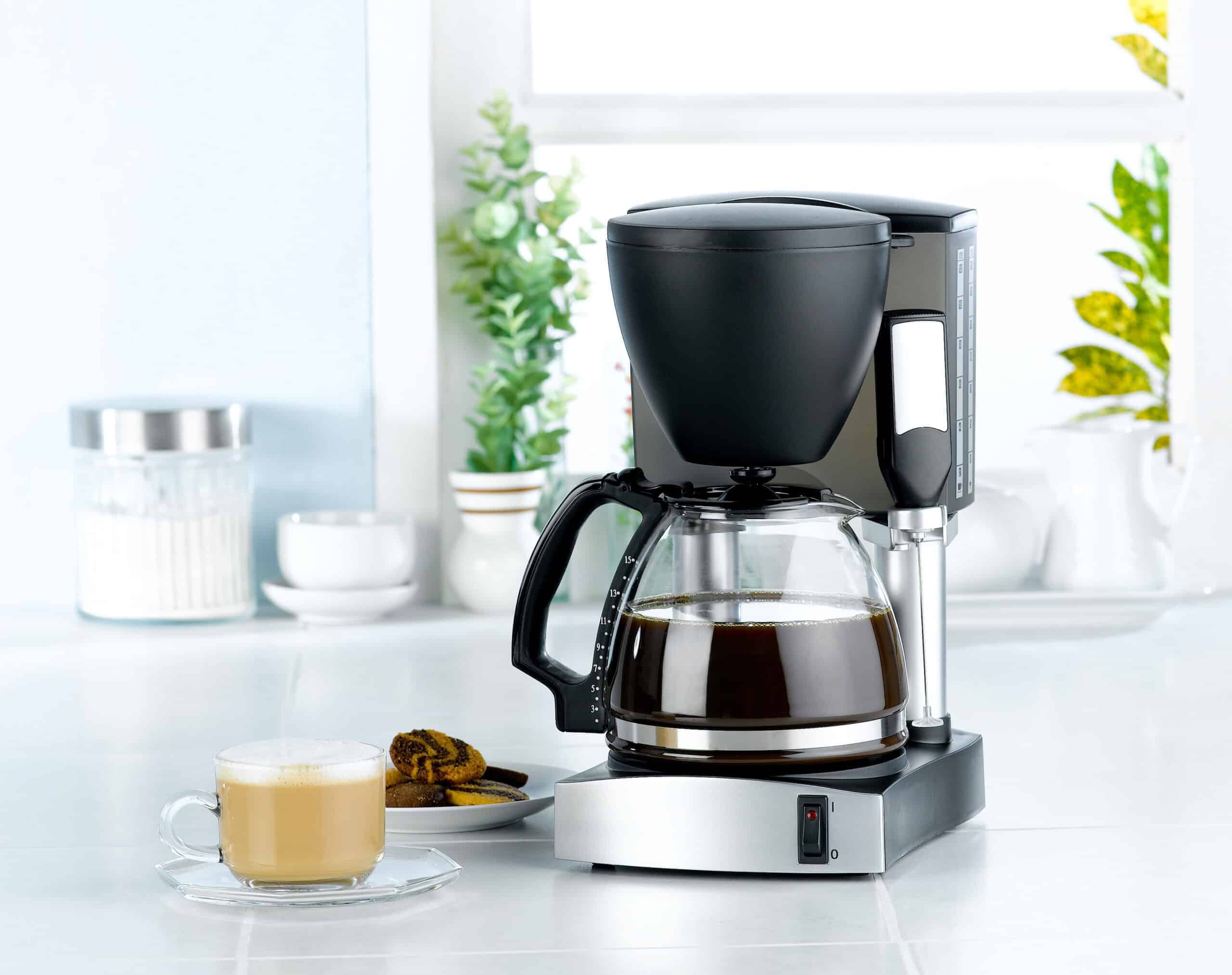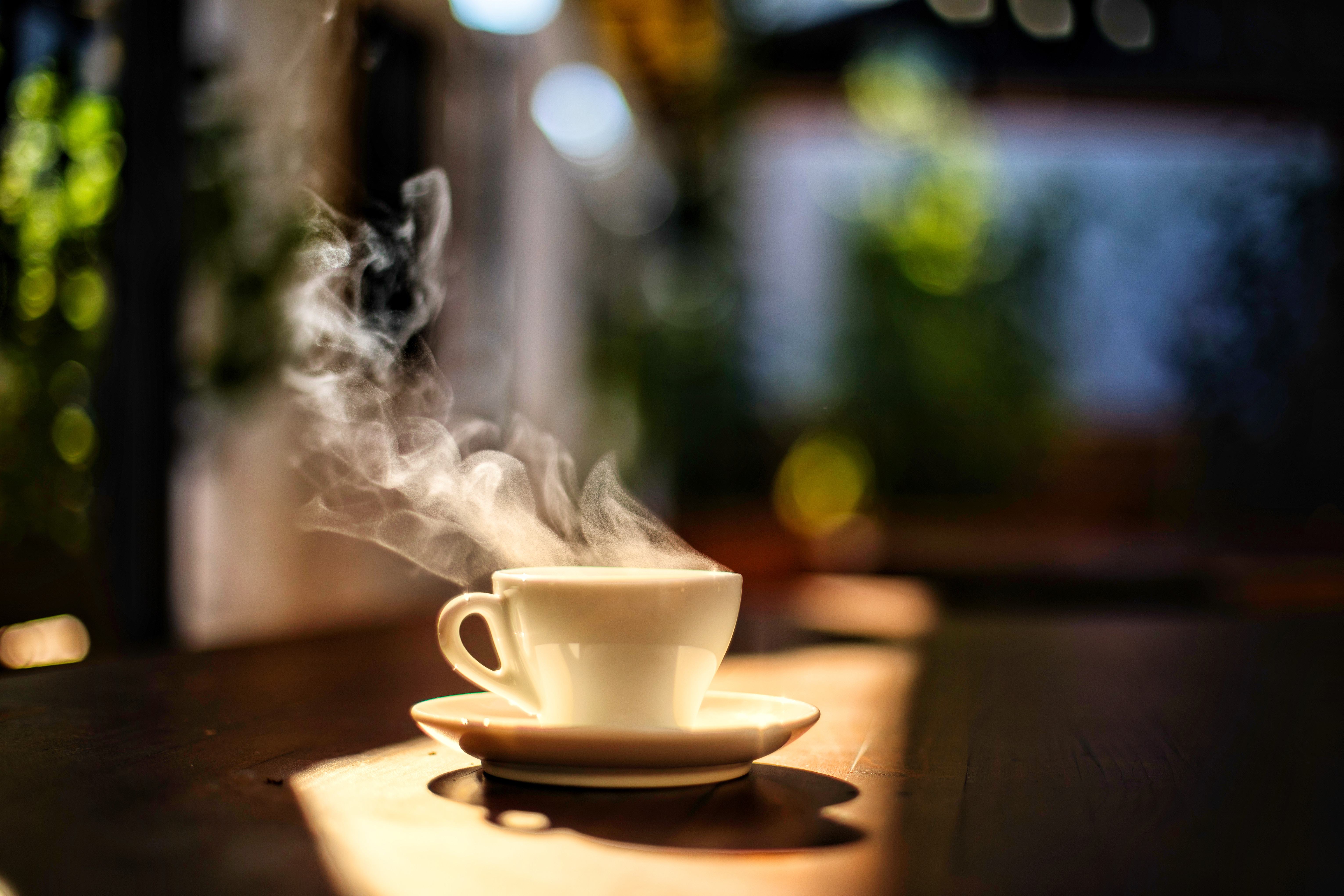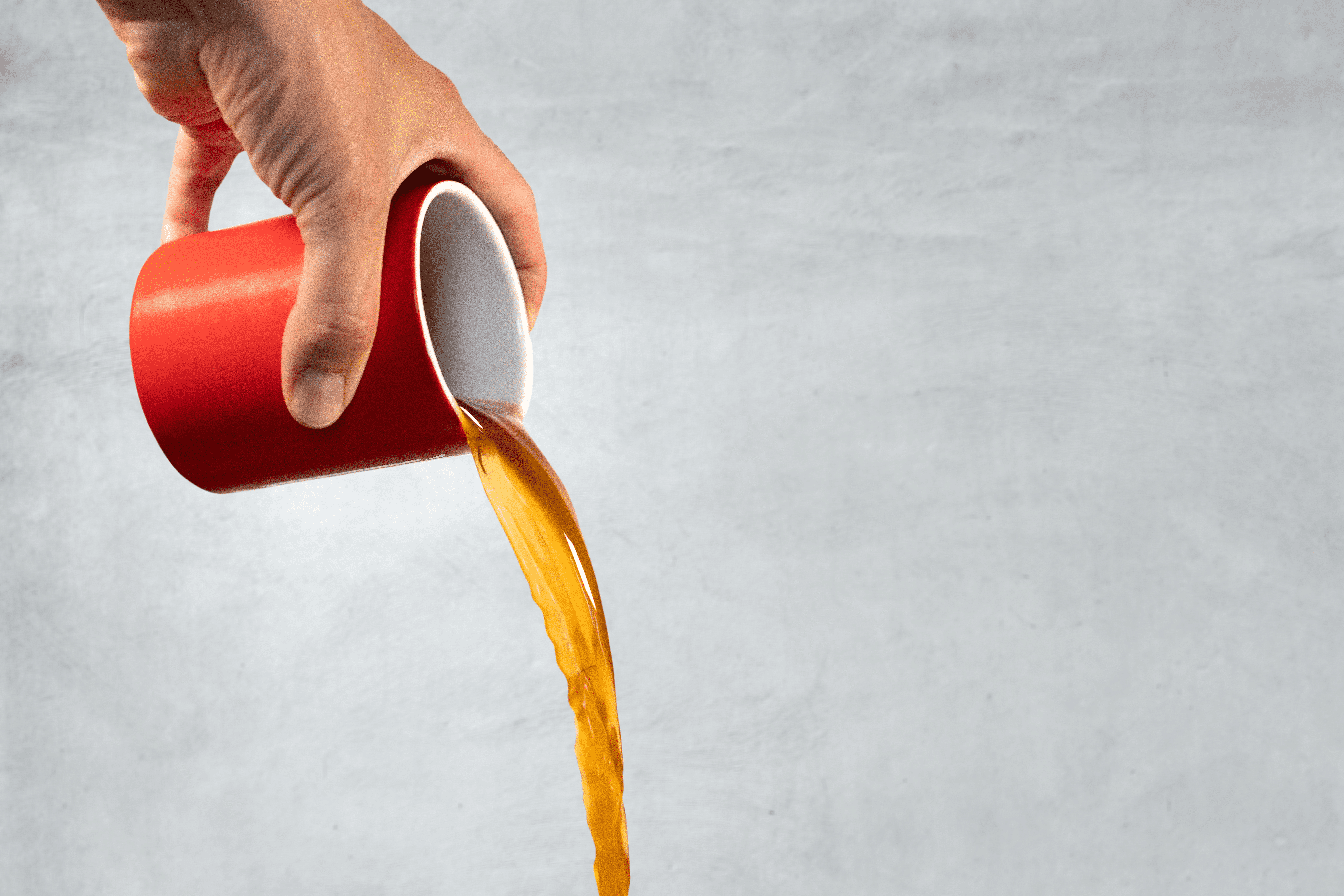Since so much of a cup of coffee comprises water, the type of water you choose is integral. Is it okay to use plain water from the tap, or should you stick to bottled only? What’s the best type of water for brewing coffee?
Per the Specialty Coffee Association of America or SCAA, the water that goes into coffee should be fresh, clean, and odor-free. The water should contain no more than 250 milligrams per liter of total dissolved solids, no more than 85 milligrams per liter of calcium, and have a pH of 7.5 at most.
What type of water is that, you ask? That’s exactly what we’ll tell you in this article. Keep reading for more information on whether hard or soft water is better for making your most flavorful cup of coffee yet!
What Kind of Water is Best for Coffee?
If you’re obsessed with making the perfect cup of coffee (which we assume you are if you’re reading this), then you know the SCAA has standards that allow you to do so. These standards are rather stringent, but only to ensure coffee quality.
So what does the SCAA say about which type of water to use in your coffeemaker? Per the intro, here’s a breakdown of their standards.
Color
Don’t worry if the idea of water having a color is off-putting to you. The SCAA thinks the same way. The best coffee for brewing should have what they call a “clean color.” In other words, the water can’t be murky or dingy, so there is no yellow or brown water here!
Freshness and Cleanliness
The SCAA also advises that coffee aficionados only use fresh, clean water when brewing a cup at home.
Odor
If you’ve ever smelled odorous water, you know what we’re discussing here. It’s certainly not something you feel comfortable drinking. The SCAA recommends that the water you pour into your coffee machine has no odor.
Sodium Content
Sodium is salt, and a little salt in coffee is not the worst thing for it. You may recall that if you’ve read some of our recent posts. Salt can counteract a bitter cup of coffee, making it taste more palatable.
The target range for sodium in the water you use to brew coffee is 10 milligrams per liter. That said, if the water contains slightly more than 10 milligrams per liter of sodium, that’s still within the acceptable range. So too, is somewhat less sodium okay.
Total Alkalinity
Total alkalinity refers to how well water can neutralize acids. Alkaline compounds, including carbonates and hydroxides, are usually present in water and can reduce H+ ions, thus increasing the water’s pH.
The SCAA’s target for total alkalinity in water used to brew coffee is 40 milligrams per liter. Slightly over and slightly under are within the acceptable range too.
Calcium Hardness
Some water contains more calcium ions than others. This water is usually referred to as hard.
Besides calcium, other mineral content that make up hard water include sulfates, chlorides, bicarbonates, and magnesium carbonates.
So what does the SCAA suggest? The target calcium hardness level in water is 68 milligrams per liter or 4 grains. Up to 5 grains and 85 milligrams per liter of calcium hardness is acceptable.
Water is rated by hardness on a scale. Water is only moderately hard at 60 to 120 milligrams per liter.
This water contains more minerals than slightly hard water and far more minerals than soft water, but it’s not considered hard (120 to 180 milligrams per liter) or very hard (more than 180 milligrams per liter).
Total Dissolved Solids
Total dissolved solids refer to the salts, organic materials, metals, and minerals that dissolve in water. The lower the TDS measurement, the purer the water is, thus the higher its quality.
The SCAA has a target goal of water used for coffee to contain only 150 milligrams per liter of TDS. Up to 250 milligrams per liter is okay.
Total Chlorine
Water can contain chlorine, and the measurement known as total chlorine tells us how much. Total chlorine accounts for both free chlorine and combined chlorine together.
Free chlorine is the portion of chlorine that hasn’t mixed with water. It’s still actively filtering out microorganisms. Combined chlorine has been used to filter microorganisms and isn’t actively doing so.
Per the SCAA’s standards, the water you pour into your coffeemaker should have zero milligrams per liter of total chlorine.
pH
Finally, there’s pH. Many substances are measured on a pH scale, where they can be more acidic or basic, aka alkaline. The target goal for water is to have a pH of 7.0, considered a neutral ph. That said, if the water is slightly more acidic at 6.5 or a little basic at 7.5, that’s okay too.
Is It Okay to Use Tap Water in a Coffeemaker?
So, considering the standards that the SCAA has presented, should you continue to use water from your kitchen tap to brew coffee?
Well, that’s a hard question to answer without knowing more about what type of water exits your tap.
As mentioned in the last section, water can be soft, slightly hard, moderately hard, or very hard. Below are the criteria for each.

It’s not like you necessarily get to choose how hard the water flows through your taps. The USGS has a map that showcases just how hard water is across the United States.
Soft water containing fewer than 60 milligrams per liter of minerals is uncommon and found in only a smattering of states across the country. Moderately hard water up to 120 milligrams per liter is more common but still not prevalent.
Unfortunately, hard water that’s more than 180 milligrams per liter is the standard across most of the US.
As you’ll recall from earlier, the SCAA recommends that water contains up to 85 milligrams per liter if you’re using it to brew coffee. At this level, the minerals in your water would enhance the flavor of your coffee.
Once you exceed that recommended range, the water is too hard to positively impact the taste of your brew.
Plus, as we’ve touched on recently on the blog, calcium hardness can contribute to developing limescale or scale.
Scale affects how well your coffeemaker works, reducing its ability to brew water at its ideal temperature. Considering that many coffeemakers fail to reach the 205 degrees Fahrenheit mark that brews the best-tasting cup, your coffee can come out tasting all wrong.
That’s not all. Hard water is risky in a multitude of other ways, including:
- When you do laundry, your clothes always come out dingy. The hard water limits how well soap can lather. Further, soap and dirt can’t be washed out of the clothes when they spin in the washing machine. No matter how often you run your washer, your clothes won’t come out fresher or cleaner.
- Drinking hard water is not appealing. It tastes dirty and metallic, as though it contains an excess of iron. The bacteria in the water can cause a smell reminiscent of rotten eggs.
- Showering and bathing are more difficult. It’s not only your washing machine that struggles to lather due to hard water. You won’t be able to suds up your body wash, shampoo, conditioner, or bar soap. Plus, since the hard water isn’t washing this stuff away, residue lingers on your hair and skin. You could feel itchy and have dry skin and hair.
- Limescale can develop in your coffeemaker and your other appliances as well that use water. From your washer to your refrigerator, kettle, and dishwasher, these appliances will have shorter lifespans than usual. This can cost you thousands of dollars per replacement.
- Soap scum will develop easily on your shower tiles, bathroom and kitchen sinks, and in your bathtub or shower stall. Check your dishes and glasses as well, as these will develop noticeable chalky spots.
- One of the worst consequences of hard water is that the calcium deposits can eventually accumulate to such a degree that they block the plumbing in your home. The backed-up pipes can be a nightmare to get repaired or replaced.
Fortunately, if you have hard water, you don’t just have to deal with it. You can get a water softener installed, a type of filtration system that brings down the hardness of water. Metal cations, magnesium, and calcium will be a thing of the past, making your water much softer.
Can You Use Bottled Water in my Coffeemaker?
Water softeners, while a good solution for hard water, are not necessarily the cheapest option. On the lower end, these filters can cost $500, and on the higher end, anywhere from $1,500 to $6,000.
As you budget for a water softener, you might decide to use bottled water for your coffeemaker instead.
Bottled water is often distilled, which means it goes through a purification process. The amount of TDS in the water is under 10 particles per million or ppm or 10 milligrams per liter.
Thus, that’s the problem with bottled water. It contains fewer TDS than what the SCAA recommends. As a reminder, the target TDS for water used for brewing flavorful coffee should contain 150 milligrams per liter. Between 75 and 250 milligrams per liter are acceptable as well.
However, 10 milligrams per liter is far under even 75 milligrams per liter. You might notice that your coffee tastes a bit watered-down compared to using water with a higher concentration of TDS.
That said, coffee brewed with bottled water will always taste better than the same type of coffee brewed with hard water since bottled water has no chlorine. A small number of minerals might enhance the flavor of your coffee, but chlorine will wreck the flavor.
Now, we’re not saying you shouldn’t use bottled water at all when brewing coffee. You might want to switch the brands you buy, though. Shop around for bottled water that contains the required amount of TDS.
Should I Use Distilled Water in my Coffee Maker?
Distilled water is different from bottled or filtered water. It is made from the steam of boiling water. The moisture is collected, cooled, and returned to its original state. This process removes everything in the water, including minerals, pesticides, heavy metals, and other contaminants, leaving pure Hydrogen and Oxygen, H20.
Sounds great, right? Before you go and start using distilled water for your coffee, read a bit more. Distilled water has been known to leach minerals out of boilers and metal pipes used in some coffee and espresso makers. Over time, this can lead to corrosion of your machine, which is why we highly suggest you not use distilled water when brewing coffee.
Click the link to read more about using distilled water for your coffee.
Is it OK to use Distilled water in a Keurig?
While many coffee brewer instructions won’t say anything about not using distilled water with them, Keurig does.
Keurig packaging states, “Do not use distilled water.” This is because for the Keurig to work correctly, it requires some minerals in the water to heat it properly. Without the added minerals, extraction won’t occur properly. The machine will also start to wear down and stop working overtime.
A Keurig care team member also noted that distilled water can “change the taste profile of your coffee by making it bitter.”
How to Make Purified Water For Coffee?
There are a couple of different options available to you when wanting to improve your drinking water. Depending on how much you want to spend will determine the direction you can take.
The two we’ll touch on are reverse osmosis systems and Brita Pitchers.
What is Reverse Osmosis Water?
Reverse osmosis, or RO, is one of the most effective water filtration systems available to improve water quality. I use one in my own home.
The system removes 98 % of contaminants from your tap water and produces clean, great-tasting water. Depending on the system you buy, you will have 3-5 stages of filtration. Each one will come with one or more of the following filters: Sediment filter, Carbon filter, and Semi-permeable membrane.
It is typically placed under your kitchen sink, with a separate faucet ready to dispense clean and healthy water.
Using ro water will reduce the amount of mineral and scale build-up in your coffee device. This will make regular cleanings easier and help produce a great cup of coffee.
It removes fluoride, chlorine, sediment, salt, arsenic, VOCs, herbicides, pesticides, and more. For around $200, you can buy a reverse osmosis system on Amazon.
Should I Buy a Brita Pitcher?
If you’re not looking to spend a couple of hundred dollars, purchasing a Brita pitcher is likely your better option.
After filling your pitcher with tap water, it goes through the filter and drips into the container. Each filter lasts about two to six months and reduces chlorine, lead, and other contaminants in the water.
This affordable option is an excellent alternative to a Reverse Osmosis System and will help your coffee taste clean and pure. There are various options, but here is Amazon’s best seller.
Descaling Coffee Machines to Improve Taste
Mineral buildup and scale in your coffee machine can impact how well it brews, not to mention how good your coffee tastes. There are cleaning solutions on the market that will help you keep your device in tip-top shape. The two main ones we recommend are Urnex Cleancraf and Dezcal.
Descaling your device every 3-5 months is essential to keep your coffee tasting great.
Final Thoughts
The best water for your coffeemaker has some minerals but not too many. The water is neither too acidic nor basic, and it never has chlorine. The quality should be clear, colorless, and odor-free.
You can enjoy reliably flavorful coffee by using this type of water when brewing coffee, whether it comes from a bottle or your tap!
What is the Ideal Temperature for Coffee?
When attempting to create the perfect cup of coffee, many factors come into play: coffee beans, grind size, brew method, and coffee-to-water ratio, to name a few. Another detail to…
How To Know If My Coffee Maker Has Mold?
Most people love waking up to the smell and taste of a hot cup of coffee. It not only gives our bodies a wake-up boost from the caffeine but also…


